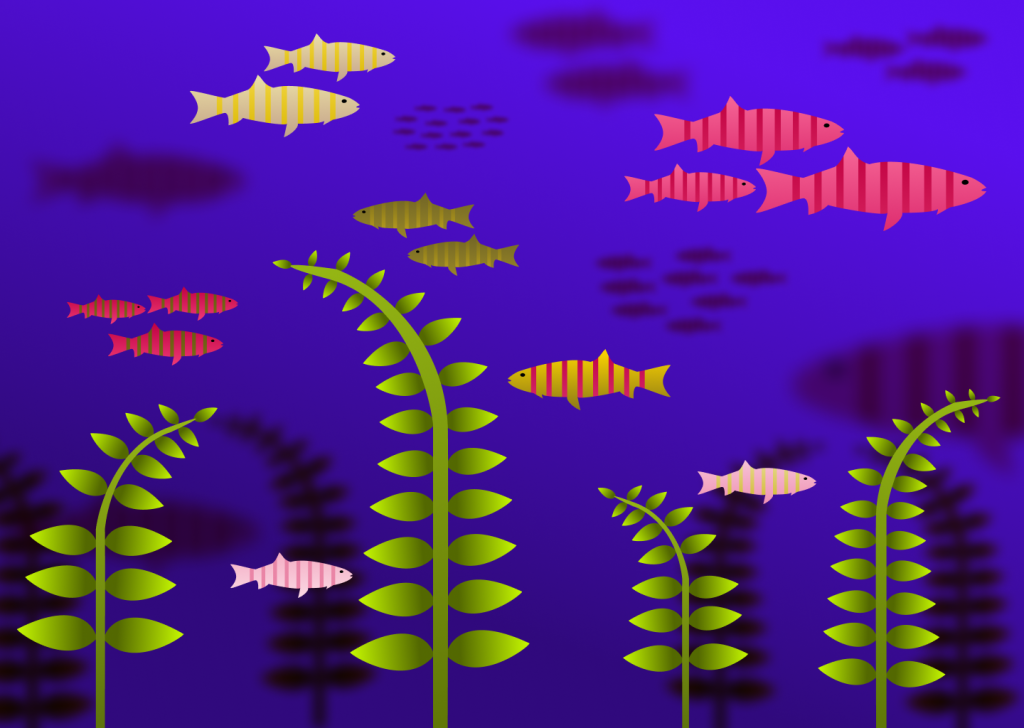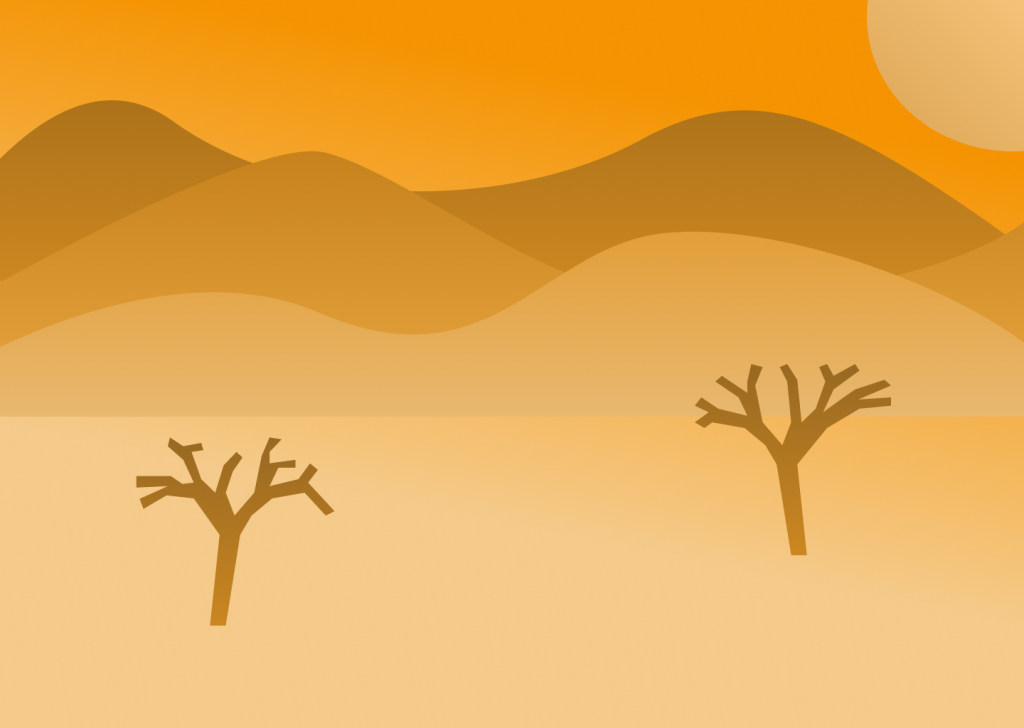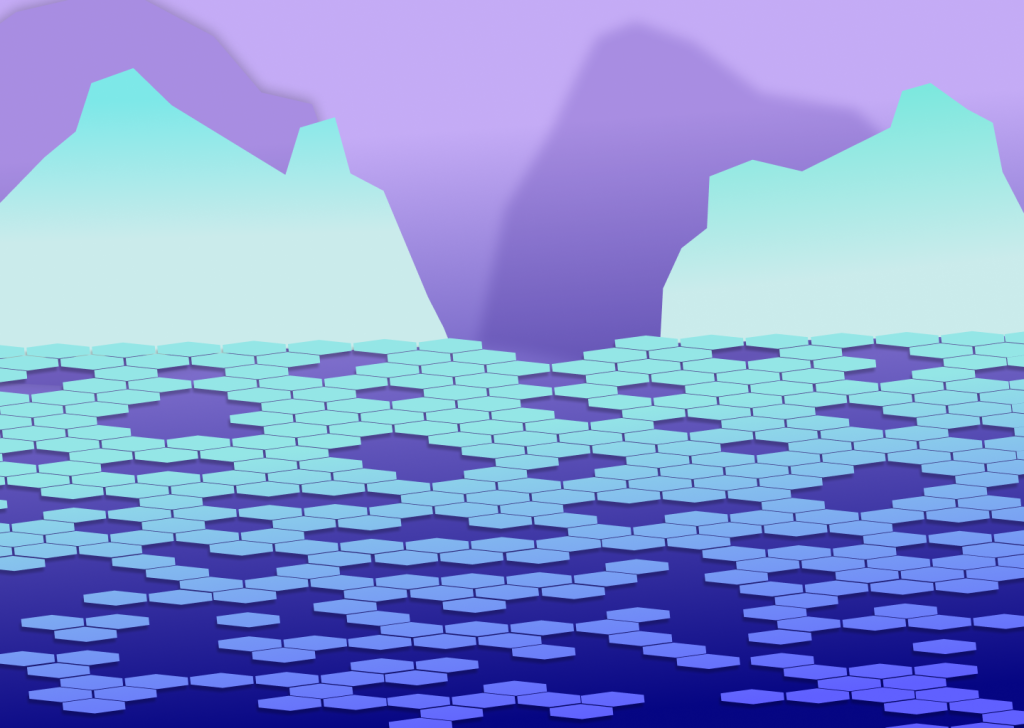
Complementary

Split-Complementary

Monochromatic

Analogous
- What did you learn?
- I learned a lot about color theory/how to choose a proper color palette. I have a lot of experience with Photoshop, but being able to put things in terms of hue, tone, tint, shade, etc definitely makes me think about color differently. I’m also glad to get experience with different color formats like HSL.
- What was easy?
- After being restricted to abstract and simple shapes in the last project, being able to work with the pen tool made things a lot easier. I was more easily able to imagine what the final product would be.
- What was challenging?
- It was difficult to choose which color scheme to go with each landscape. I figured out pretty quickly that I wanted to use a monochromatic scheme for the desert environment, but the others were slightly harder.
- How could your submission be improved?
- On one hand, I kind of like the sparse feel of the desert landscape, but it might be improved by spending more time coming up with another tasteful addition to the scene. Perhaps a tumbleweed, or some other desert vegetation.
- How could the professor improve the assignment for the next class?
- I think the assignment was very well designed. Although I can’t think of any at the moment, maybe having some additional choices for landscape types would be fun.
- How might you apply your knowledge in future assignments or work scenarios?
- I would definitely use a color wheel/decide on a color scheme if I were to work on some sort of graphic for class/work. In the past, I’ve just chosen colors by eye, but the methods we’ve learned in class seem much more reliable.
- How did a specific reading or video inspire or help you?
- The initial series of 3 articles on color were very helpful. There were tons of examples which helped illustrate the concepts they talked about.